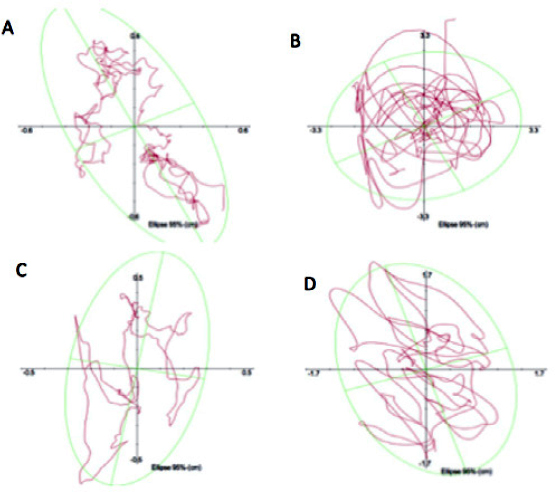ABSTRACT
To compare postural control between Football 7-a-side players with cerebral palsy (CP) and active non-athletes without neurologic impairments, 28 individuals (15 to 35 years old) were selected and divided into the Non-Athletes Group (NAG), consisting of 14 individuals without neurologic or musculoskeletal injury; and the CP Group (CPG), composed of 14 athletes from the regional football team. A force platform was used to measure anteroposterior displacement of center of pressure (COPap), velocity (COPvel), mediolateral displacement (COPml), and 95% confidence ellipse area (AREA95) on bipedal and unipedal stance. On bipedal stance, there was no difference between groups in anteroposterior displacement of center of pressure (COPap) and velocity (COPvel). On unipedal stance with the dominant leg, the NAG presented better postural control, statistically significant in mediolateral displacement (COPml), 95% confidence ellipse area (AREA95) and COPap (p = 0.003; p = 0.001; p = 0.018, respectively). Our results showed that both groups have similar postural control on bipedal stance, but NAG demonstrated better postural control with unipedal stance than Football 7-a-side players with CP.
Keywords
Cerebral Palsy; Postural Balance; Soccer

